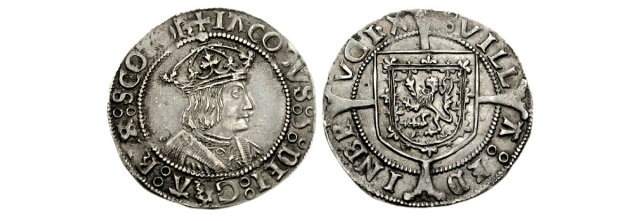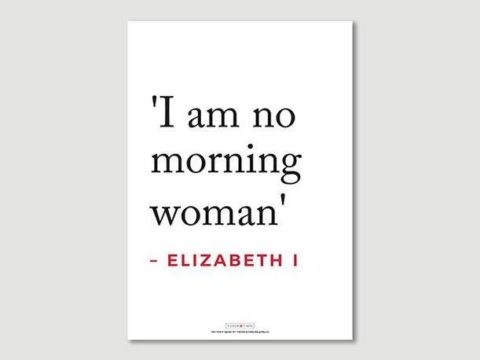Money in Stewart & Tudor Times
Chapter 1: Development of Coinage
On 15th February 1971, Britain and Ireland adopted decimal currency. This was a momentous change, as prior to “D-Day” (as it was called) all the countries in the British Isles had used a system of currency and coinage that had obtained since the days of the Emperor Charlemagne, in the early 800s AD. Thus money in the days of Elizabeth I and James VI, was coined in the same way as it had been under Edward the Confessor and Macbeth in the eleventh century.
The basis of the currency was silver. A pound weight of the precious metal (denoted with the symbol “l” for the Latin libra or pound – stylised as £) was divided into 240 little pieces, known in English and Scots as pennies, but denoted “d” for the Roman denarius. In the early middle ages, because the coinage was actually made of silver, coins minted anywhere in Europe were used as currency. English minted coins first appeared in the tenth century, and Scottish coins under King David I in 1136.
Both countries used the same ratio of 240 pennies to the pound, and the currencies were interchangeable. However, in the reign of King Robert II, either for lack of funds, or to make a profit for the Crown, the ratio of pennies to pounds was changed and 252 Scottish pennies were produced from each pound of silver.

For many centuries, in both countries, only the pennies were available as actual coinage. Each individual coin was created by hammering: the minter laid a small amount of silver on the die, then put the reverse die on top of the silver and hit it hard. It was a painstaking and laborious process. So slow, in fact, that although there were quite a few mints across the country, there were never enough coins in circulation and the lack of them was a drag on economic progress.
Multiples of pennies were not, initially, coins, but units of account. The familiar one is the shilling, which was the equivalent of twelve pence, but there was also the very widely used mark (merk in Scots), which was worth two-thirds of a pound, or 13s. 4d. The mark was used throughout Europe well into the reigns of Elizabeth I and James VI.
In due course, having only the penny coin became cumbersome and additional value coins began to be struck in both countries. However, because the currency was actually based on the value of the underlying precious metal, the face value of individual coins was not static as modern coins are, and from time to time the Government would announce that a particular coin now had a new value, as the precious metal price fluctuated. This makes understanding the currency tricky as a coin of the same name can have various different values at different times.
The other disadvantage of money actually being made of precious metal was that counterfeiting and coin-clipping (nipping a bit off the edge) was rife. This was a high-risk practice as counterfeiting was a hanging offence.


